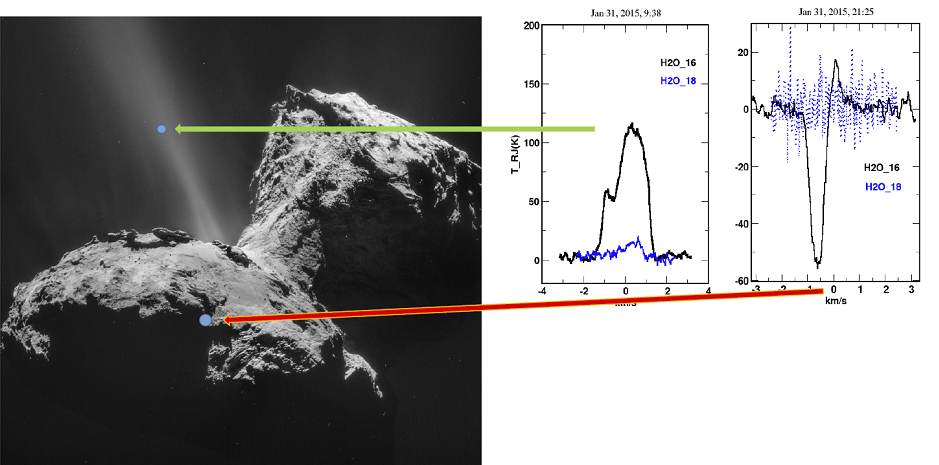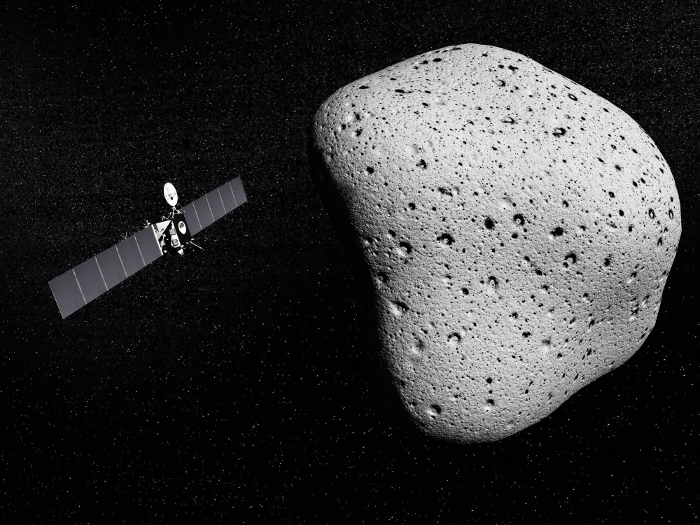Nach einer zehnjährigen Reise über 6,4 Milliarden Kilometer, ist die ESA-Raumsonde Rosetta am 11. November 2014 am Kometen 67P/Churyumov-Gerasimenko angekommen. Wainwright Instruments ist stolz darauf, Hochfrequenzfilter zu Verfügung gestellt zu haben, für einen On-Board-Mikrowellenspektrometer, gebaut von verschiedenen Partnern, darunter das Max-Planck-Institut für Sonnensystemforschung.

Above Photo: Comet 67P/Churyumov-Gerasimenko.

Above photos: Rosetta spacecraft (left) and Microwave Instrument for the Rosetta Orbiter (MIRO) with Chirp Transform Spectrometer (CTS).

Above Photos: Front and rear view of Chirp Transform Spectrometer (CTS) and analogue tray including Wainwright bandpass filters with Lepra/Con connectors.

Above Photo: Rosetta navigation camera photo of the cometary nucleus during an outburst of the Rosetta comet 67P and MIRO-CTS spectroscopic observation of water vapour at 557 GHz (H216O) and 548 GHz (H218O). The blue circles on the outburst and the comet show the position and size of the MIRO beam. The green arrow pointing to the outburst emission (blue point as indicated in outburst, spectrum left) and absorption (pointing towards the nucleus) lines. From these spectra information about the speed of the gas molecules in the outburst, the oxygen isotopic ratio in water and the amount of water within the outburst and above the cometary nucleus can be derived (Paul Hartogh, MPS, Göttingen).


 Wainwright Instruments
Wainwright Instruments